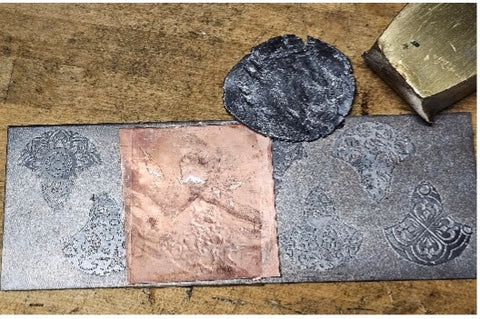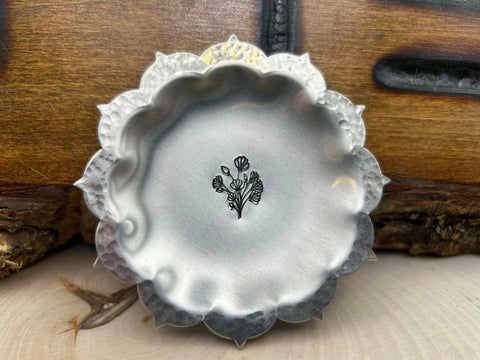Creating unique textures on metal can transform your jewelry designs, making them stand out with intricate, beautiful patterns. While using a rolling mill texture plate with a rolling mill is one effective method, you don't necessarily need a rolling mill to achieve stunning results. Here we will show you two alternative methods to using rolling mill texture plates using a hydraulic press and a hammer method.
The Magic of Rolling Mill Texture Plates
Rolling mill texture plates are versatile tools that allow you to imprint detailed designs onto nonferrous metals. These plates can be used to create a wide variety of textures, from simple patterns to complex, intricate designs, adding depth and character to your metalwork.
Why Use Texture Plates?
- Enhance Design: Textured metals add a unique element to your jewelry, making each piece distinct.
- Versatility: Use on various nonferrous metals like copper, silver, and brass.
- Creative Freedom: Experiment with different patterns and designs to find your signature style.
Methods for Using Rolling Mill Texture Plates
With a Hydraulic Press
Using a hydraulic press is a popular method because it provides consistent pressure, ensuring even and precise imprints. This method is ideal for creating detailed and uniform textures.
- Advantages: Consistency, precision, and the ability to handle larger pieces of metal.
- Supplies Needed: Hydraulic press, steel rolling mill texture plate, torch, pickle pot, disposable gloves, clear packing tape, lead sinkers, and nonferrous metal.
Without a Hydraulic Press: The Hammer Method
For those who don't have access to a hydraulic press, the hammer method is a great alternative. This technique allows you to achieve beautiful textures using just a hammer and some basic tools.
- Advantages: Simplicity, accessibility, and the ability to work with minimal equipment.
- Supplies Needed: Hammer, steel rolling mill texture plate, torch, pickle pot, disposable gloves, clear packing tape, and nonferrous metal.
Learn How to Use Texture Plates
To help you get started, we've prepared detailed, step-by-step PDF guides for both methods. Whether you choose to use a hydraulic press or a hammer, these instructions will guide you through the process, ensuring you achieve the best results.
Conclusion
Incorporating texture plates into your metalwork opens up a world of creative possibilities. Whether you opt for the precision of a hydraulic press or the simplicity of a hammer, you can achieve stunning, textured designs that will set your jewelry apart. Explore both methods and discover which works best for your style and resources.
For more tips, tutorials, and resources on jewelry making and metalsmithing, visit our blog. Happy crafting!




Comments (0)
There are no comments for this article. Be the first one to leave a message!